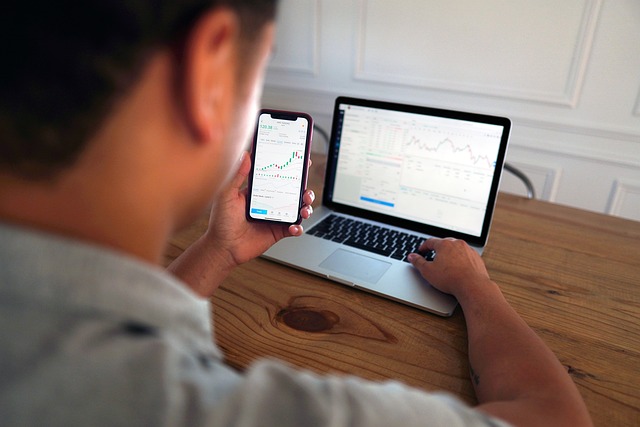The Rise of Trading Bots: Understanding, Benefits, and Future Prospects
In the world of financial trading, technology continues to evolve at a breakneck speed. One of the most fascinating and impactful advancements in this domain is the development and utilization of trading bots. These automated software programs optimize trading processes and strategies, allowing traders to capitalize on market opportunities in a way that human intuition alone may not be able to achieve. In this article, we will delve into the intricate details surrounding trading bots, providing insights into their workings, benefits, challenges, and the future landscape they’re likely to shape.

What are Trading Bots?
At its core, a trading bot is a software application designed to automate trading processes on behalf of a user. They execute trades based on predefined criteria, and the intricacies behind them can vary widely from one program to another. This technology harnesses algorithms and mathematical models to analyze market data in real-time, identify trading opportunities, and execute buy or sell orders autonomously.
Types of Trading Bots
Understanding the different categories of trading bots can provide greater insight into their functionalities and where they might best fit individual trading strategies. Let’s look at some common types:
- Market Making Bots: These bots aim to provide liquidity to the market. By placing buy and sell orders simultaneously, they profit from the bid-ask spread.
- Trend-Following Bots: These bots capitalize on market momentum. They buy assets when they perceive an upward trend and sell them during downward trends.
- Arbitrage Bots: They exploit price differences in various markets or exchanges, buying low on one exchange and selling high on another.
- Signal Bots: These bots use trading signals from technical analysis to execute trades, taking decisions based on market indicators.
How Do Trading Bots Work?
The operational mechanics of trading bots can be intricate, yet their underlying principle is relatively simple: data input, algorithm application, and trade execution. Here's a more detailed look at each step involved:
Data Collection
Trading bots begin by gathering vast amounts of market data. This data may include historical prices, trading volume, market depth, news articles, and even social media trends. Advanced bots may also utilize APIs to connect with various market exchanges to access real-time data feeds.
Algorithm Application
Once the data is collected, trading bots employ sophisticated algorithms to analyze market conditions. These algorithms can be based on technical indicators such as Moving Averages, Bollinger Bands, or RSI (Relative Strength Index). Additionally, machine learning techniques may come into play, enabling the bots to learn from past trading outcomes and adjust strategies accordingly.
Trade Execution
After identifying potential trading opportunities, trading bots can execute trades at lightning speed. This immediacy can be a significant advantage over human traders, who may take precious seconds to analyze and decide. The use of algorithms means that trades can occur even while the trader sleeps, ensuring that opportunities are not missed due to time zone differences or simply the need for rest.
The Benefits of Trading Bots
The growing popularity of trading bots can be attributed to several advantages that they offer, including but not limited to the following:
1. Enhanced Efficiency and Speed
One of the standout benefits of trading bots is their ability to process and analyze data, generate signals, and execute trades at extraordinarily high speeds. In fast-moving markets, where seconds can mean the difference between profit and loss, this efficiency is invaluable.
2. Emotionless Trading
Human traders are often susceptible to emotions—fear and greed can lead to irrational decision-making, adversely affecting active trading strategies. In contrast, trading bots operate purely based on data and algorithms, minimizing emotional interference and fostering discipline.
3. 24/7 Operation
Financial markets never sleep, especially with the rise of cryptocurrencies. Trading bots can monitor and trade assets around the clock, ensuring that traders capitalize on global opportunities, regardless of their availability.
4. Backtesting Capabilities
Before deploying a trading strategy in live markets, bots can simulate trading scenarios using historical data. This feature, known as backtesting, allows traders to assess the effectiveness of their strategies and make informed adjustments before risking real capital.
Challenges Involved with Trading Bots
Despite their numerous advantages, trading bots also present various challenges that traders need to navigate carefully. Here are a few of them:
1. Technical Knowledge Requirement
The successful deployment and management of trading bots often necessitate a level of technical knowledge. Traders unfamiliar with programming or algorithmic trading may find it challenging to tweak, optimize, or troubleshoot their bots effectively.
2. Market Volatility
Markets can be unpredictable, and unprecedented events can lead to significant losses quickly. Trading bots that rely on historical data or preset algorithms might not react adequately to sudden market shifts, placing capital at risk.
3. Over-Optimization
There is a danger of over-optimizing strategies based on historical data—what worked in the past may not necessarily work in the future. Traders must maintain a flexible approach, continually adapting their strategies to current market conditions.

The Future of Trading Bots
As we look to the future, several trends suggest that trading bots will continue to gain traction in the financial landscape:
1. Increased Adoption of AI and Machine Learning
The integration of artificial intelligence and machine learning into trading bots represents a significant frontier. These technologies enable the bots to learn from past errors, adapt to new market conditions, and continuously improve their trading strategies over time, potentially leading to superior performance.
2. Regulation and Compliance
As the popularity of trading bots soars, regulatory bodies are starting to catch on. We may witness more stringent regulations aimed at ensuring transparency and protecting traders from potential pitfalls associated with automated trading processes.
3. Accessibility for Retail Traders
The democratization of trading technology means that even novice traders can access sophisticated trading bots, leveling the playing field. As platforms offer more user-friendly interfaces and customizable options, it will become increasingly straightforward for individuals of all backgrounds to engage in increasingly complex trading strategies.
Conclusion
In conclusion, trading bots represent a remarkable blend of technology and finance, enhancing trading efficiency while also harboring their share of challenges. As someone who believes in the power of innovation to transform traditional methodologies, I view trading bots as a compelling tool for anyone looking to navigate the complexities of modern financial markets. However, it’s essential for traders to educate themselves, remain vigilant, and continually adapt to master the intricacies that come with this exciting technology. The future of trading bots is undeniably bright, and I, for one, am eager to see how they will reshape the landscape of trading moving forward.